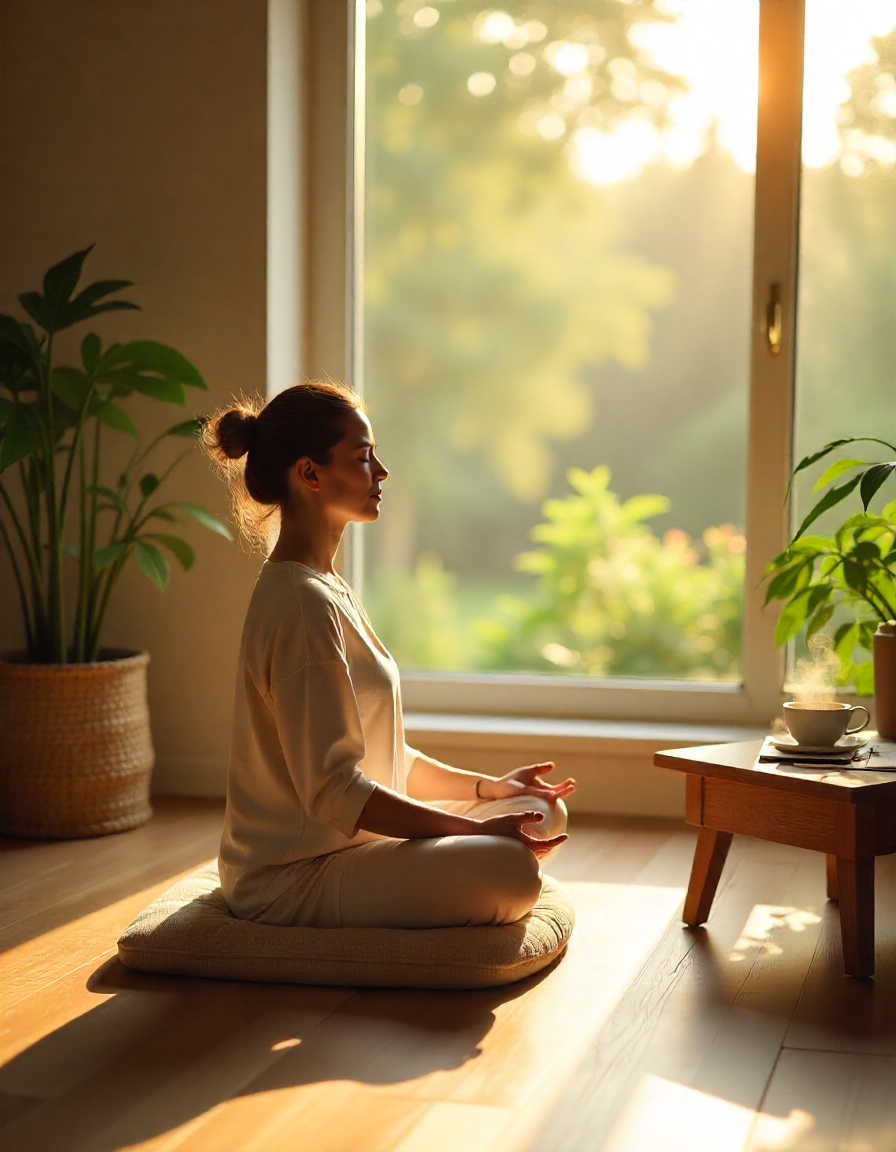In today’s fast-paced environment, it’s easy to feel overwhelmed. Between work commitments, social obligations, and endless digital distractions, carving out moments of peace can seem impossible. Yet, many find that the key to well-being isn’t about doing more but about living with intention and awareness.
Mindful living isn’t a trend or a buzzword; it’s a deliberate practice that encourages presence and clarity amid the chaos. It’s about noticing small details, appreciating simple pleasures, and making choices aligned with what truly matters.
Why Mindfulness Matters
The human brain is wired to scan for threats and plan for the future, often pulling our attention away from the present. This tendency can lead to stress, anxiety, and a sense of disconnection. Practicing mindfulness offers a counterbalance, helping to anchor your focus in the here and now.
Research shows that spending even a few minutes daily in mindful awareness can lower cortisol levels, improve mood, and enhance cognitive function. Beyond health benefits, mindfulness nurtures gratitude and fosters a deeper connection with oneself and others.
Incorporating Mindfulness into Everyday Life
Mindfulness doesn’t require meditation cushions or special retreats. It can be woven into the fabric of your daily routine in simple ways:
-
Mindful Eating: Instead of rushing meals, savor each bite. Notice textures, flavors, and aromas. This practice not only improves digestion but also cultivates appreciation for nourishment.
-
Focused Breathing: Pause occasionally to take slow, deliberate breaths. This can ease tension and bring clarity, especially during stressful moments.
-
Active Listening: When conversing, fully attend to the other person without planning your response or multitasking. This deepens relationships and builds empathy.
-
Nature Walks: Step outside and engage your senses — feel the breeze, hear birdsong, observe colors and shapes around you. Nature’s rhythms encourage calm and presence.
Simplifying to Enhance Quality of Life
Mindful living often leads naturally to simplification. When you tune into what truly matters, unnecessary clutter — physical, mental, or emotional — tends to fall away.
Minimalism isn’t about having less for its own sake, but about making space for what brings value. This might mean decluttering your home, setting clearer boundaries at work, or reducing time spent on social media. Simplification creates room for creativity, rest, and authentic experiences.
Building Meaningful Rituals
Rituals provide structure and a sense of grounding. These don’t have to be elaborate — they can be as simple as a morning cup of tea enjoyed quietly or a weekly phone call with a close friend.
By intentionally creating rituals, you mark moments as special and distinct from the busyness of everyday life. Over time, these small anchors bring rhythm and balance.
The Role of Technology
While screens can contribute to distraction, technology can also support mindful habits. Apps that prompt breathing exercises, gentle reminders to stand or stretch, and digital journals help maintain awareness.
The key is using technology intentionally rather than mindlessly. Turning off non-essential notifications, setting tech-free zones or times, and choosing content that uplifts rather than drains can make a significant difference.
Cultivating Gratitude
Gratitude and mindfulness go hand in hand. Taking time to acknowledge small blessings — a kind word, a moment of laughter, a sunset — nurtures positive emotions and reduces negativity.
Keeping a gratitude journal or simply pausing each day to reflect on what went well helps shift focus away from scarcity or dissatisfaction toward abundance.
Mindful Movement
Movement is more than exercise; it can be a form of meditation. Practices like yoga, tai chi, or even mindful walking engage body and mind simultaneously, fostering awareness of sensations and breath.
If structured classes aren’t appealing, simply slowing down during daily activities — washing dishes, gardening, or stretching — invites mindfulness.
Facing Challenges with Presence
Life includes difficulties. Mindful living doesn’t mean ignoring pain or hardship but approaching them with acceptance and curiosity rather than avoidance or judgment.
This shift in perspective allows for emotional processing and growth. Rather than reacting impulsively, you respond with greater clarity and compassion.
Creating a Supportive Environment
Your surroundings influence your ability to stay present. A cluttered, noisy space can distract and overwhelm, while a calm, orderly environment encourages focus.
Consider arranging your living or working area to reflect tranquility — perhaps adding plants, soft lighting, or meaningful objects that inspire you.
The Journey Over the Destination
Mindfulness is not a goal to be achieved but an ongoing practice. It invites patience, self-compassion, and openness to the ebb and flow of experience.
Rather than striving for perfection, mindful living embraces imperfection and change as part of life’s richness.
Practical Steps to Begin
-
Start with five minutes of mindful breathing each day.
-
Choose one daily task to do slowly and attentively.
-
Keep a simple journal to note moments of awareness and gratitude.
-
Set gentle reminders to check in with your body and mind.
-
Limit multitasking; focus on one thing at a time.
Closing Reflections
In the rush to achieve and acquire, it’s easy to lose sight of the present moment. Yet, life unfolds only here and now. By choosing mindful living, you open the door to richer experiences, deeper connections, and a steadier sense of peace.
This isn’t about adding more to your plate but about shifting how you relate to what’s already there. Through small, consistent efforts, you reclaim the art of balance and invite meaning into everyday moments.

